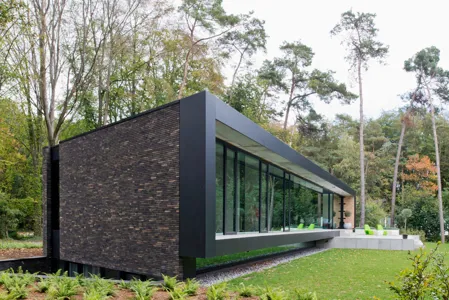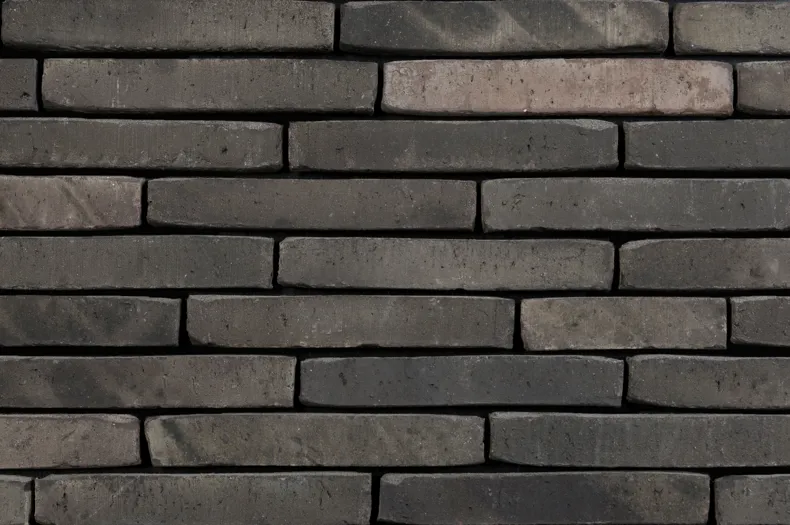Facing brickslinea 6012
Technical data sheets
- Color description
- The colour of the body is grey-green-brown to black-green with nuances.
- Manufacturing dimensions (L x W x H)
- ca. 240x115x38 mm (LxWxH)
- Quantity / m² with a traditional joint
- 80 (12 mm)
- Number / m² with a thin joint
- 93 (6 mm)
linea 6012
Black-green slim brick
This thin facing brick with subtle shading is produced using the Wasserstrich method. It also carries our Hand-Made label which guarantees a strong, natural nuance. This black-green unsanded variant from our linea series is ideal for accentuating clean linear designs in decorative brickwork.
case studie linea 6012

Linea 6012 reinforces the idea of bringing earth and air together
Black House, an interplay of historic and modern influences
Black House is a private new build house in the English countryside in Kent and was completed in the summer of 2017 by AR Design Studio.

Walls of linea 6012 connect the exterior and interior of this mews house
Blackbox: Culford Mews London by Form Art Architects
The idea of the mews served as the starting point for Blackbox in more ways than just its physical location. In contrast to the traditional mews architecture of solid brick enclosures with tiny windows and little daylight, this design is filled with light, but still respects the contextual language of a 'solid box'.

Linea 6012 gives form to the architecture and makes reference to the site’s past
Brickfields, a project that effortlessly unites past and present
When architect and designer Daniel Sanderson, stumbled upon the opportunity to purchase an additional plot of land adjacent to his property in Hackney, London, he decided to design and build a house that both reflects his personal style and acknowledges the history and architecture of the surrounding Victorian estate.
Continue reading
References
How to Install ?
Preparation of the construction site
- Always order the full amount of bricks required for a specific site. In this way, the entire order can be made during one production run.
- Try to have the full order supplied at one time. If this creates several deliveries, always mix a number of packs from the previous delivery with a number of packs from the new delivery. This procedure is especially recommended in case of re-order or for an additional order.
- Take bricks diagonally across the pack.
- Draw and use bricks from at least five different packs.
- For setting out, use bricks from the delivery made to the site in question. Do not exclusively use the theoretical dimensions of the brick, or samples previously supplied, or different production run from that intended for the site.
- As soon as the bricks arrive on site, check delivery tickets and certificates against the specification and order. Also check that there are no visible inconsistencies with the order.
- Do not lay bricks in freezing weather or protect the ‘fresh’ masonry with insulating mats in order to avoid frost damage to the mortar.
- In the case of prolonged dry hot weather, lightly dampen the newly laid brickwork to stop the mortar drying and curing too quickly.
- Do not lay bricks in precipitation in order to prevent mortar from running on the wall.
Avoid Efflorescence
- During and after laying, protect the newly built brickwork for a height of at least 60 cm - but ensure there is airspace between the brick face and the waterproof covering.
- Provisionally install rainwater down pipes to avoid saturation of the newly laid brickwork
- Never lay bricks in driving rain conditions















